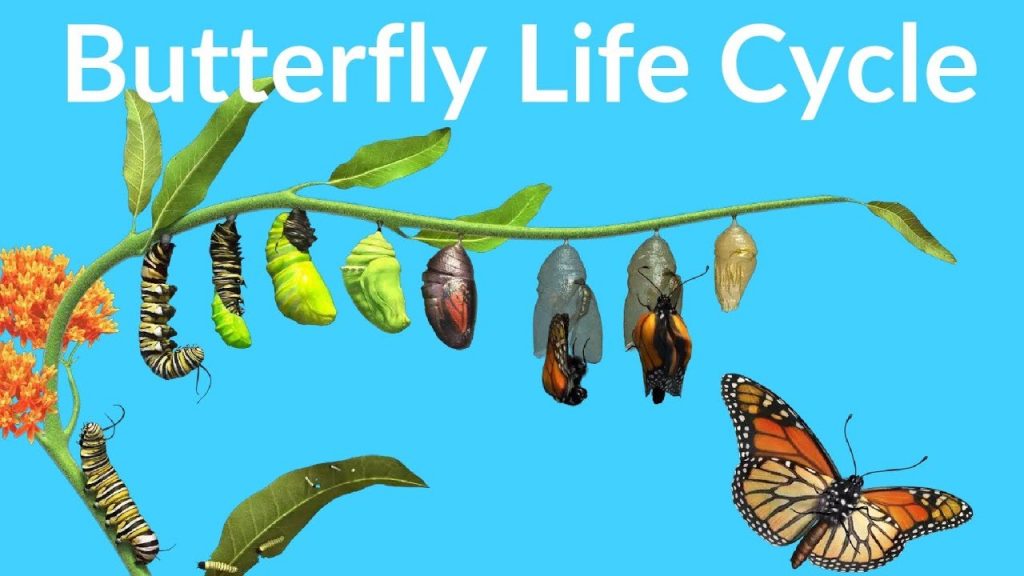
The butterfly life cycle is a compact procession through four unique stages. They repeat, one after the another, for every species of butterfly out there. The differences lie mostly in the length of time for each stage of the cycle.
The first stage is the egg. Female butterflies lay eggs on leaves or stems – any part of a plant that can later serve as food for the caterpillar or butterfly larvae. The Monarch butterfly, for example, lays its eggs on the Milkweed plant.
Butterfly eggs are tiny. They can be round or oval-shaped, are usually whitish in color and often have a fine set of ribs on them which are visible only through a microscope.
A caterpillar hatches from the egg. Caterpillars are crawling creatures – they have lots of legs and often resemble a colorful worm. This is an important growth stage for the butterfly. Caterpillars do precious little with their lives beside eat. They consume tremendous amounts of vegetation relative to their size, and shed their skin to accommodate their expanding body.
After a period of (usually) weeks have passed, the caterpillar sheds its skin a final time and encloses its body in a hard shell known as a chrysalis, or pupa. Inside the pupa, the caterpillar’s body tissues literally dissolve and the adult butterfly forms. It is an astounding process in such a tiny space.
Some butterfly species actually winter over in the chrysalis. Others – the Monarch comes to mind, as does the Painted Lady butterfly – emerge much sooner. An adult butterfly is known as an imago. It is the most brightly colored and active of the four stages. Most likely, it is imagos that you see in your butterfly garden, hovering about the butterfly bush or the roses or the snapdragons.
Adult butterflies represent the penultimate life stage. They court one another, mate, lay eggs and colonize new butterfly habitats. And when their life comes to a close, they have always left behind a bevy of butterfly eggs to start the cycle anew.